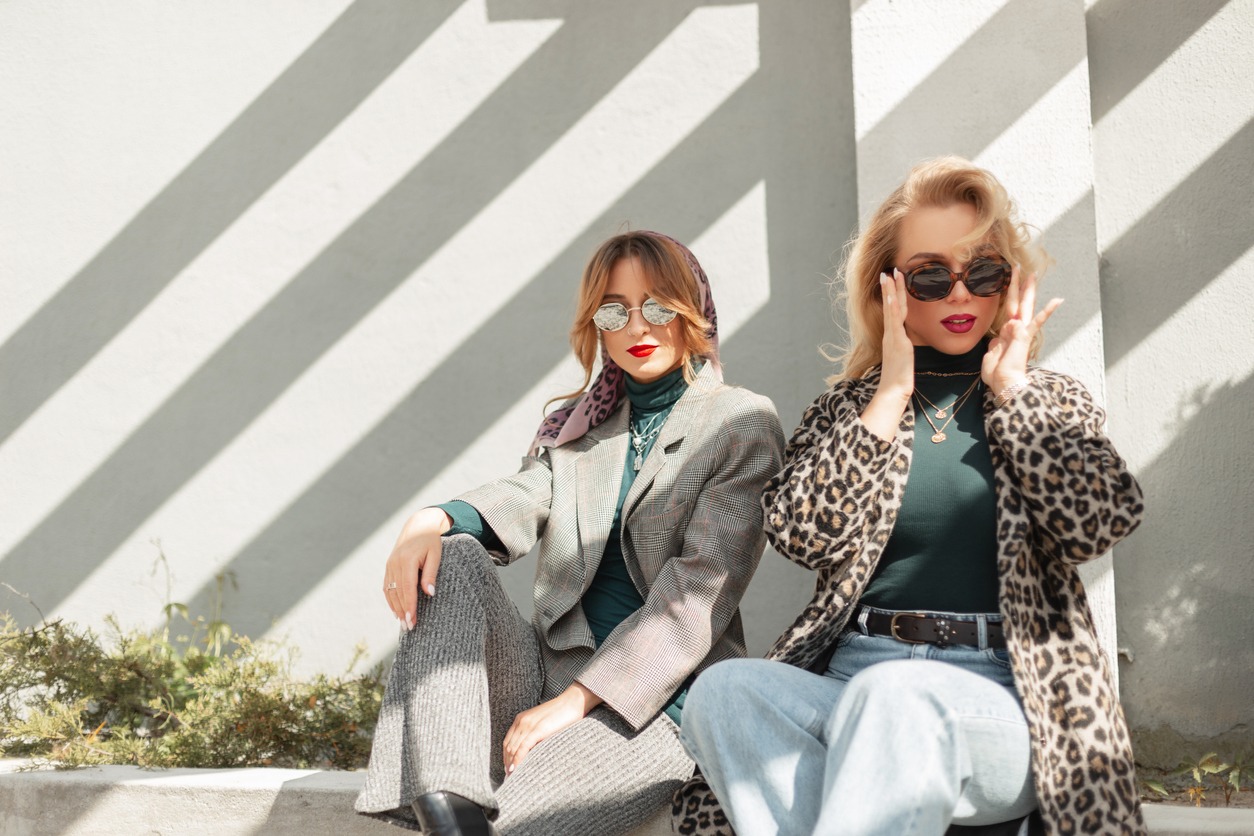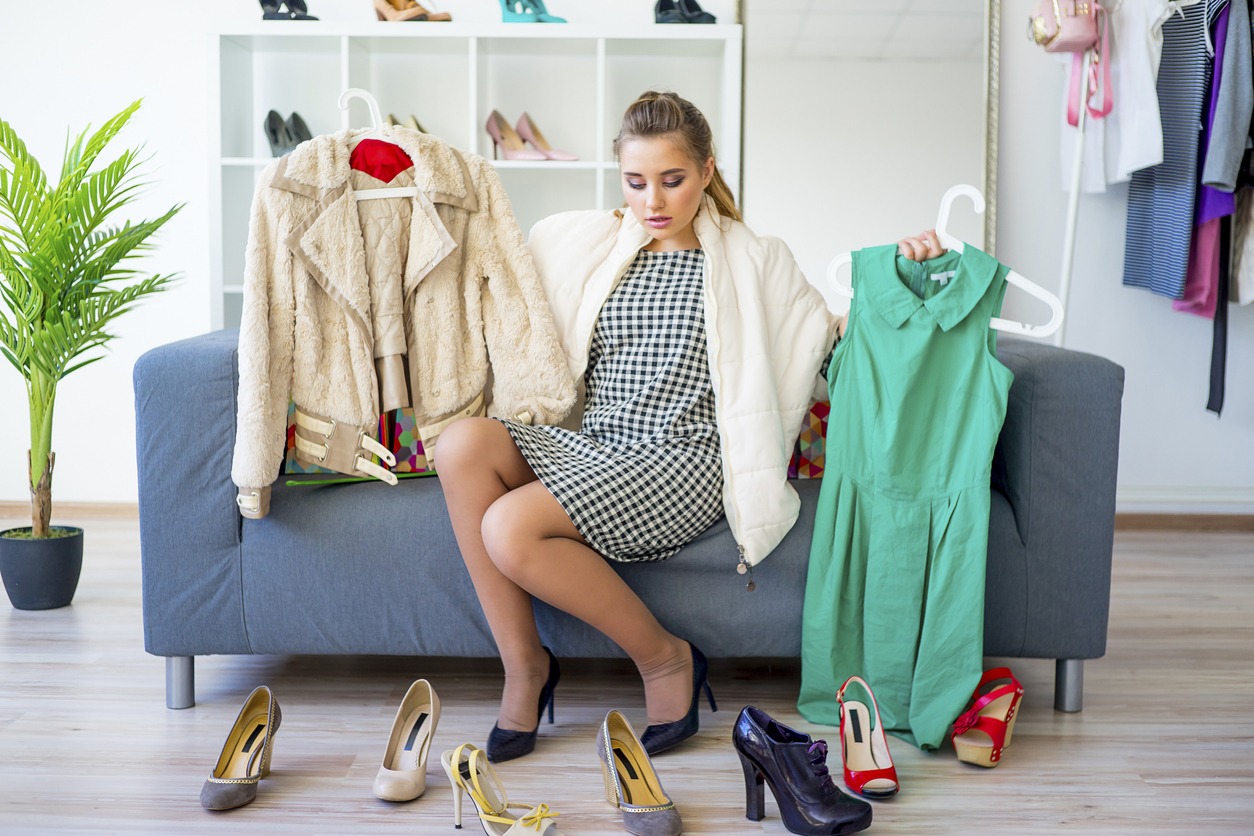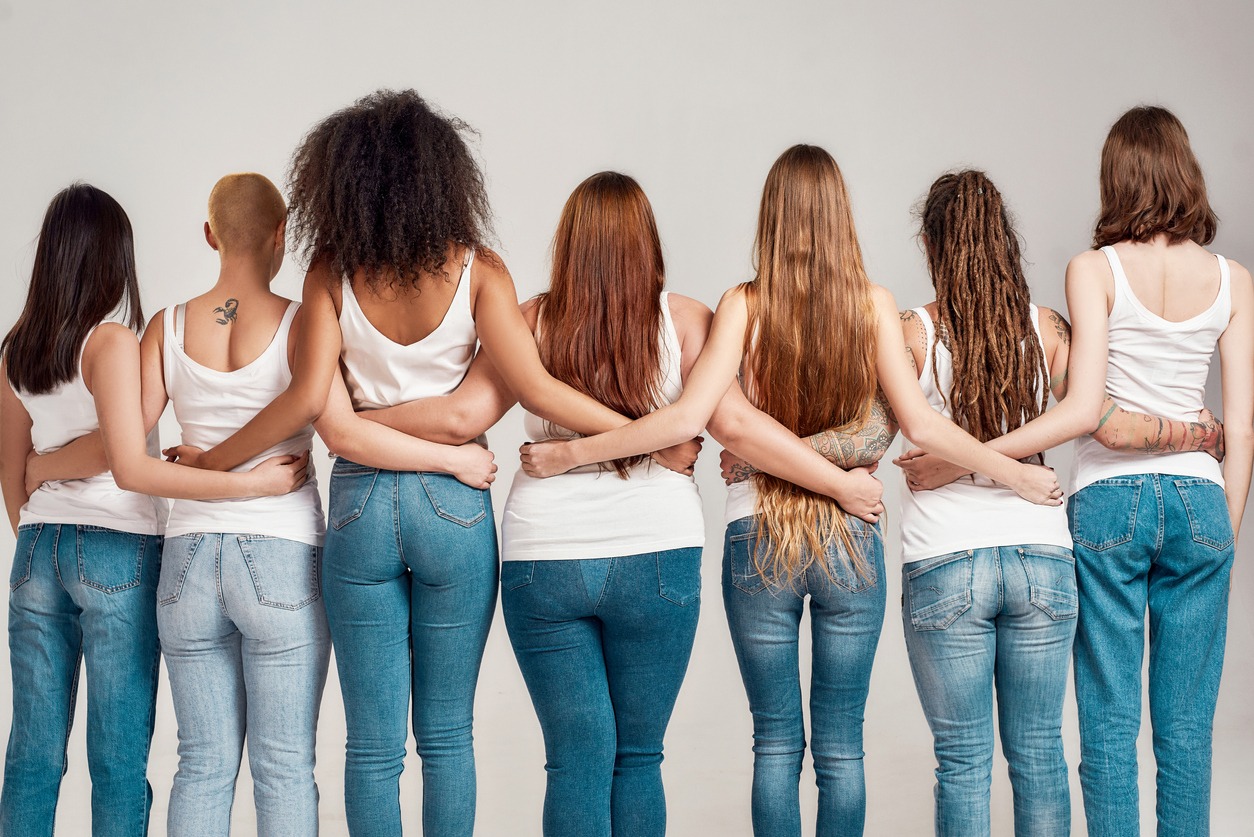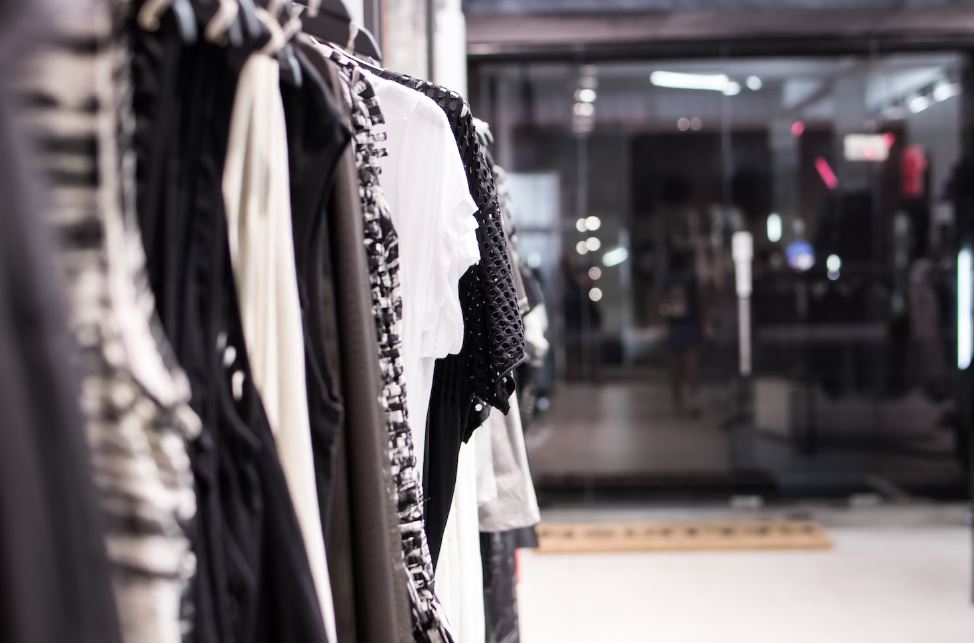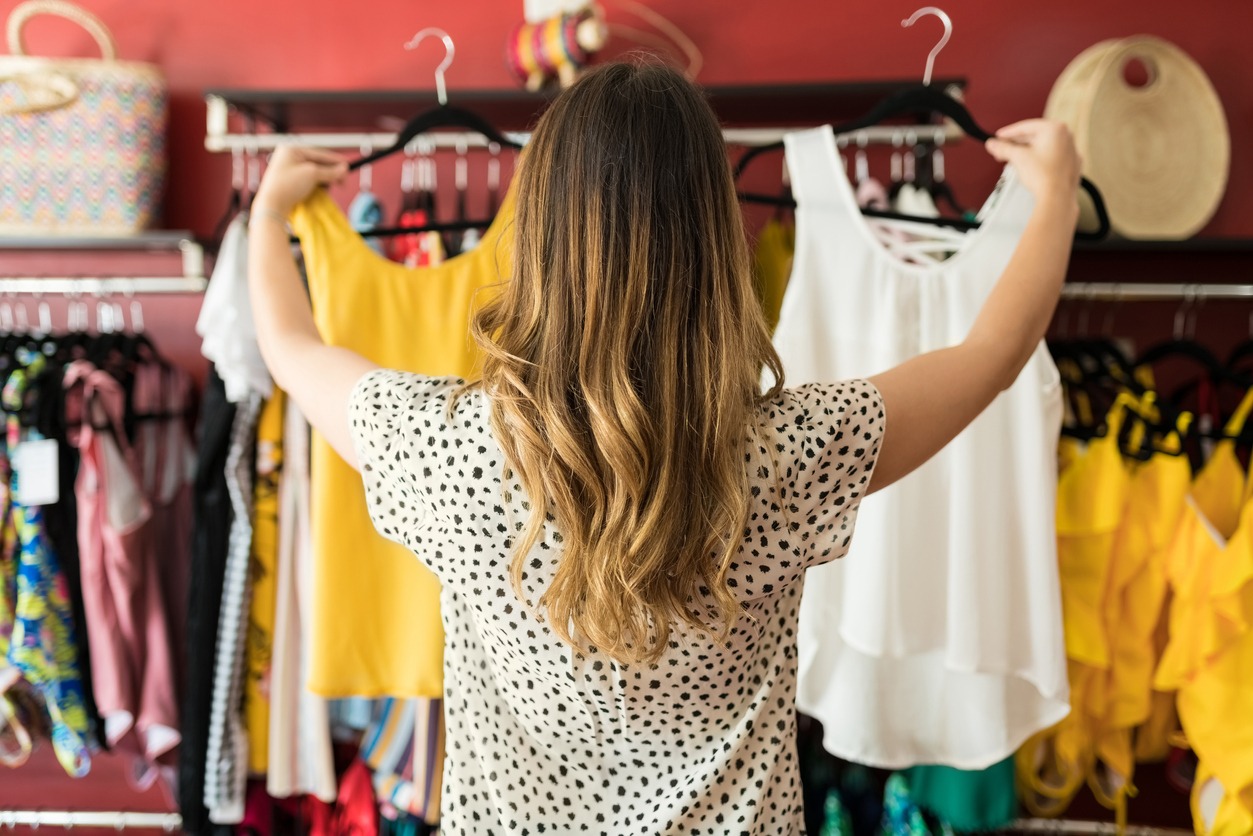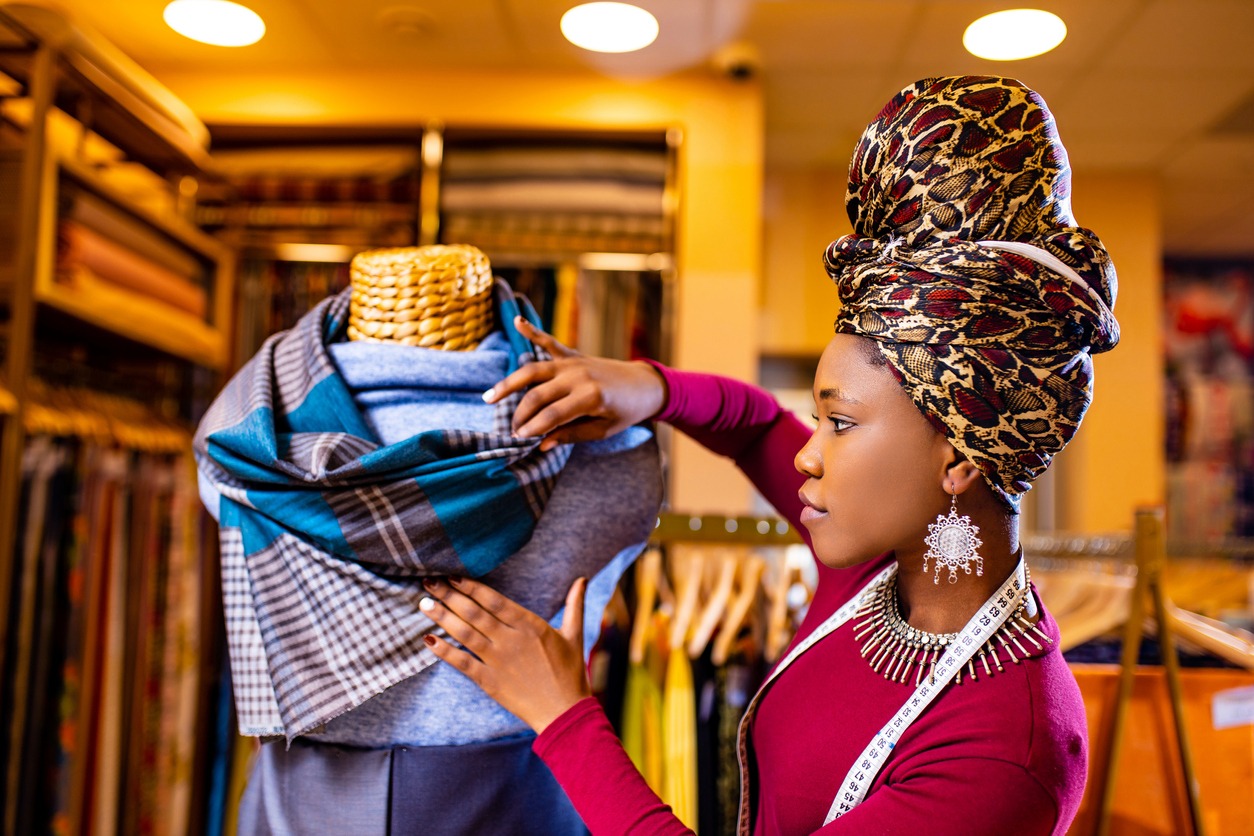Introduction to Style and Comfort
In the world of women’s fashion, finding the delicate equilibrium between style and comfort is an art, a science, and a personal journey all at once. It’s the pursuit of garments that not only make a statement through aesthetics but also cradle the body in a cocoon of ease and wearability. Balancing style and comfort in women’s wear is a testament to the modern woman’s multifaceted life, where her clothing must transition seamlessly from boardrooms to social gatherings, from bustling city streets to serene retreats. This balance is achieved through the fusion of individuality, quality, practicality, and fashion-forward trends, all while respecting personal preferences and the demand for versatility. In essence, it’s about empowering women to express themselves through clothing that embodies the perfect marriage of panache and well-being.
The Age-Old Debate: Style vs. Comfort
The age-old debate between style and comfort is a perpetual conundrum that has plagued fashion-conscious individuals for generations. On one hand, there’s the undeniable allure of stylish clothing that exudes confidence, turns heads, and makes a bold statement. Yet, on the other, there’s the appeal of comfort, promising ease, and a sense of contentment throughout the day. It’s a constant tug-of-war between the desire to look fabulous and the need to feel at ease in one’s attire. Striking the perfect balance between these two aspects is the holy grail of fashion, where an ideal outfit effortlessly fuses style and comfort, allowing you to not only look good but also feel great. It’s a timeless quest, one that continues to challenge and inspire fashionistas around the world.
The Importance of Finding a Balance
In the world of women’s fashion, finding a balance between style and comfort is paramount. While style often steals the spotlight with its trends and aesthetics, it should never come at the expense of comfort. Women’s wear should empower individuals, helping them express their unique personalities and feel confident in their own skin. An outfit that is exquisitely stylish but torturously uncomfortable can detract from a woman’s overall presence and enjoyment. Conversely, prioritizing comfort over style might mean sacrificing that extra dose of confidence that fashionable clothing can offer. Striking the right equilibrium allows women to not only look chic but also feel at ease and confident, enhancing their overall well-being. It’s a delicate art, one that evolves with time and individual preferences, but when achieved, it results in a harmonious blend of style and comfort, making women’s wear truly impactful. Today, there is a growing appreciation for clothing that combines both elements, giving women the best of both worlds. In essence, the importance of finding this balance is not just about what we wear; it’s about how we feel, how we present ourselves, and how we navigate our daily lives with grace and confidence.
Understanding Body Types and Dressing Accordingly
Dressing in a way that flatters and complements your body type is a fundamental aspect of fashion and personal style. By understanding your unique body shape and making strategic clothing choices, you can enhance your appearance and feel more confident in your attire. Here’s an overview of the importance of understanding body types and how to dress accordingly:
Different Body Types
There are several common body types, including the hourglass, pear, apple, rectangle, and inverted triangle. Each body type has distinct characteristics, such as the distribution of weight, waist-to-hip ratios, and proportions. Understanding which category best describes your body shape is the first step in dressing to your advantage.
Flattering Silhouettes
Once you identify your body type, you can select clothing styles and silhouettes that accentuate your strengths and minimize areas you might want to downplay. For example, if you have an hourglass figure with a well-defined waist, you can opt for dresses and tops that cinch at the waist to emphasize this feature.
Highlighting Assets
Dressing according to your body type allows you to showcase your best features. If you have shapely legs, you can wear skirts or shorts that draw attention to this area. Similarly, if you want to highlight your neckline and shoulders, choose tops and dresses with flattering necklines.
Camouflaging Areas of Concern
Understanding your body type also enables you to camouflage areas that you might not feel as confident about. For instance, if you have a pear-shaped body with wider hips, you can choose A-line skirts or dresses that balance your silhouette by drawing attention away from the hips.
Proportions
Paying attention to proportions is key. If you have a longer torso and shorter legs, you can create the illusion of longer legs by wearing high-waisted bottoms. Conversely, if you have a shorter torso, opt for lower-rise pants and skirts to balance your proportions.
Color and Patterns
Your body type can also influence your choices of colors and patterns. Darker colors can create a slimming effect, while vertical stripes can elongate the body. Understanding these principles helps you make informed decisions when selecting clothing.
Personal Style
While understanding body types is essential, it’s equally important to embrace your personal style and comfort preferences. You can adapt style guidelines to suit your individual tastes and personality, making fashion choices that reflect who you are.
Confidence
Dressing according to your body type and personal style can boost your confidence. When you feel good in what you’re wearing, you’re more likely to carry yourself with poise and self-assurance, which can positively impact your overall presence.
Understanding your body type and dressing accordingly is a valuable tool for anyone interested in fashion and personal style. It empowers you to make informed clothing choices that enhance your appearance, flatter your figure, and boost your self-esteem. Ultimately, the goal is not to conform to fashion norms but to celebrate your unique attributes and express your individuality through your clothing.
Recognizing Different Body Shapes
Recognizing different body shapes is a crucial aspect of understanding how to dress in a way that enhances one’s appearance and personal style. Each body type has its unique characteristics and proportions, and by identifying these variations, individuals can make informed clothing choices that accentuate their strengths and minimize areas they might want to downplay. This awareness not only helps in achieving a more flattering and confidence-boosting look but also celebrates the diversity of human form and fashion.
Choosing Clothing That Flatters and Feels Good
Selecting clothing that both flatters your appearance and feels comfortable is a delicate and personal art. It involves the fusion of aesthetics and functionality to ensure you not only look good but also experience ease and confidence in what you wear. Achieving this balance is essential for enhancing your personal style and overall well-being. Here’s a brief overview of the process:
Identify Your Body Type
Start by understanding your body shape and proportions. Knowing your body type will guide you in choosing clothing styles that enhance your best features and minimize areas of concern.
Accentuate Your Strengths
Once you recognize your body type, select clothing styles that emphasize your assets. If you have a defined waist, opt for garments that cinch at the waist to highlight this feature. Similarly, if you want to draw attention to your legs, choose outfits that showcase your lower body.
Camouflage Areas of Concern
On the flip side, select clothing that minimizes aspects you may feel less confident about. If you’re looking to conceal your hips, choose A-line skirts or dresses that divert attention away from that area.
Prioritize Comfort
Comfort is key. Make sure your clothing choices allow for freedom of movement and don’t cause discomfort or irritation. Choose fabrics that feel good against your skin and are appropriate for the season and climate.
Color and Pattern
Consider the colors and patterns that complement your skin tone and personal style. Darker colors can have a slimming effect, while vibrant patterns can add visual interest to your outfits.
Personal Style
Embrace your personal style preferences. Fashion is an avenue for self-expression, so make choices that align with your tastes and reflect your personality.
Confidence Boost
When you feel good in what you’re wearing, your confidence soars. Dressing comfortably and flatteringly can positively impact how you carry yourself, boosting your self-esteem and overall presence.
Choosing clothing that flatters your appearance and feels good is about achieving a harmonious blend of style and comfort. It’s a deeply personal journey that celebrates your unique attributes and allows you to express your individuality through fashion. By making informed clothing choices that align with your body type and personal preferences, you can enhance your personal style and well-being while feeling confident and comfortable in what you wear.
Highlighting Best Features While Prioritizing Comfort
Dressing to emphasize your best features while prioritizing comfort is a delicate and rewarding endeavor in the world of fashion. This approach allows you to look and feel your best, celebrating your unique attributes while ensuring that your clothing supports your well-being. Here’s a brief exploration of how to achieve this balance:
Recognize Your Best Features
Start by identifying the features you want to highlight. These could be physical attributes like your legs, waist, shoulders, or neckline, or aspects of your personality that you want to express through your clothing.
Choose Flattering Silhouettes
Select clothing styles and silhouettes that accentuate these features. If you have well-defined legs, opt for skirts or shorts that draw attention to this area. For a defined waist, choose garments that cinch at the waist to emphasize it.
Pay Attention to Color and Patterns
The choice of colors and patterns can further enhance your best features. Consider colors that complement your skin tone and patterns that draw attention to the areas you want to highlight.
Opt for Versatile Pieces
Look for clothing that is both stylish and versatile. Versatile pieces can be dressed up or down, ensuring that you can highlight your best features in a range of settings without compromising on comfort.
Prioritize Comfort
Comfort is paramount. Ensure that your clothing allows for ease of movement, doesn’t cause discomfort or irritation, and is appropriate for the season and climate. Fabrics play a significant role in ensuring comfort.
Personal Style and Confidence
Embrace your personal style preferences. Fashion is a means of self-expression, so make choices that align with your tastes and reflect your unique personality. When you feel good in what you’re wearing, your confidence soars, positively affecting your overall presence.
Highlighting your best features while prioritizing comfort is a holistic approach to fashion. It allows you to express your individuality while feeling at ease and confident in your attire. By making informed clothing choices that align with your body type and personal style, you can celebrate your unique attributes and enhance your overall well-being.
The Role of Fit in Balancing Style and Comfort
The role of fit is pivotal when it comes to balancing style and comfort in your clothing choices. Whether you’re striving for a chic appearance or prioritizing ease, the way your garments fit your body can make or break the equation. Achieving the right fit ensures that you not only look good but also feel at ease in what you wear, making it a critical element in the delicate balance of personal style and comfort.
The Importance of Well-Fitted Clothing
Well-fitted clothing is not merely a matter of aesthetics; it is a fundamental component of fashion and comfort. A good fit can transform your entire look, boost your confidence, and enhance your overall well-being. Here’s a brief exploration of the importance of well-fitted clothing:
- Enhanced Appearance: Well-fitted clothing accentuates your body’s natural lines and proportions. It can make you appear more polished, put-together, and stylish. When clothing fits well, it complements your figure, creating a sleek and flattering silhouette.
- Comfort: Properly fitting clothing is comfortable to wear. It allows for freedom of movement and doesn’t cause discomfort, chafing, or constriction. Comfortable clothing is essential for everyday activities and overall well-being.
- Confidence Boost: When you feel good in what you’re wearing, your confidence soars. Well-fitted clothing can make you feel more self-assured, positively impacting how you carry yourself and your interactions with others.
- Functionality: Well-fitted clothing serves its intended purpose. For example, activewear that fits well enhances your performance, while a well-fitted suit or work attire can boost your professionalism and comfort throughout the day.
- Versatility: A key advantage of well-fitted clothing is its versatility. These pieces can often transition seamlessly from casual to formal settings, making your wardrobe more adaptable and cost-effective.
- Sustainability: Well-fitted clothing is more likely to be worn and cherished, reducing the need for constant replacements. This aligns with sustainable fashion principles, contributing to less waste and a smaller environmental footprint.
The importance of well-fitted clothing extends beyond mere appearance. It influences your comfort, confidence, and overall quality of life. It plays a vital role in balancing style and comfort, allowing you to look good and feel good simultaneously. Investing in well-fitted pieces is an investment in your personal style, well-being, and long-term satisfaction with your wardrobe.
Tips For Achieving the Perfect Fit
Achieving the perfect fit is a critical aspect of dressing well and feeling comfortable in your clothing. Here are some tips to help you find and achieve the ideal fit:
- Know Your Measurements: Get accurate measurements of your body, including your bust, waist, hips, inseam, and arm length. Keep these measurements handy, as they serve as a reference when shopping for clothing.
- Understand Your Body Shape: Recognize your body type, as different styles and cuts may flatter various body shapes differently. Understanding your body shape helps you choose clothing that enhances your best features.
- Try Before You Buy: Whenever possible, try on clothing before purchasing. Sizes can vary between brands and even between different styles within the same brand. Trying on ensures the fit is right for your body.
- Consider Proportions: Pay attention to proportions. If you have a longer torso and shorter legs, choose high-waisted bottoms to balance your figure. If you have a shorter torso, opt for lower-rise pants or skirts.
- Take Note of Fabrics: Different fabrics behave differently. Consider the stretch, drape, and structure of the fabric when choosing clothing. Some fabrics are more forgiving, while others may require a precise fit.
- Follow Care Instructions: Care for your clothing properly by following care instructions. Shrinking or stretching due to incorrect washing or drying can negatively affect the fit.
- Adjust Your Shopping Habits: Shop with a discerning eye. Rather than buying items based on trends or impulsive decisions, focus on purchasing timeless pieces that fit well and suit your personal style.
- Consult a Professional: If you’re unsure about your measurements or body shape, consider consulting with a fashion stylist. They can provide personalized recommendations for clothing that complements your figure.
- Alterations for Special Occasions: For special occasions, consider having clothing custom-made or investing in high-quality, tailored pieces. The extra cost for perfect fit and comfort on special occasions is often worth it.
- Regularly Review Your Wardrobe: As your body changes over time, regularly review your wardrobe to ensure a proper fit. Donate or tailor items that no longer fit correctly.
- Online Shopping Considerations: When shopping online, read sizing charts carefully and pay attention to customer reviews that mention fit. Some online retailers offer virtual fitting rooms or recommend sizes based on your measurements.
Achieving the perfect fit involves a combination of understanding your body, shopping wisely, and making necessary alterations. The effort pays off with clothing that not only looks great but also feels comfortable and confident. Remember that personal style and fit are dynamic, and your needs may change over time, so stay attuned to your evolving preferences and body shape.
Mastering the Art of Proportions
Mastering the art of proportions is a key element in the world of fashion and style. It’s about understanding how to balance different aspects of your outfit to create a visually pleasing and harmonious look. From the right length of your pants to the width of your lapels, proportions play a crucial role in achieving a polished and well-put-together appearance.
The Concept of Aesthetic Harmony
The concept of aesthetic harmony revolves around the idea of creating a visually pleasing and balanced composition in various forms of art, design, and aesthetics. It encompasses the notion that when elements within a composition work together in a coherent and pleasing way, they generate a sense of beauty and unity. Aesthetic harmony can be found in a wide range of disciplines, including visual arts, architecture, interior design, fashion, and even in the natural world. It often involves principles such as balance, symmetry, contrast, color coordination, and proportion to achieve a harmonious and appealing result. This concept is not only fundamental in the world of creativity but also influences how we perceive and interact with our surroundings, ultimately shaping our sense of beauty and aesthetics.
Balancing Proportions for A Stylish Look
Balancing proportions is a fundamental principle in achieving a stylish and well-put-together look in the world of fashion. It’s about creating visual harmony by ensuring that different elements of your outfit work together in a way that flatters your body shape and personal style. Here are some tips for balancing proportions for a stylish appearance:
Identify Your Body Type
Start by understanding your body type. Whether you have an hourglass, pear, apple, rectangle, or inverted triangle shape, knowing your body’s proportions is key to choosing clothing that complements your figure.
Focus on Balance
The aim is to create a balanced silhouette. If you have a curvier bottom half, balance it with a well-fitted top. If you have broad shoulders, consider styles that add volume to your lower body.
Use Colors and Patterns Strategically
Darker colors and solid colors tend to have a slimming effect, while lighter or patterned garments can draw attention. Use this knowledge to balance areas you want to emphasize and those you’d prefer to downplay.
Play with Length
Experiment with lengths of clothing items. For instance, high-waisted bottoms can elongate your legs, and cropped tops can create an illusion of a longer torso. Choose lengths that work well for your body type.
Layer Thoughtfully
Layering can add depth and dimension to your outfit. Pair shorter jackets with longer tops, or a tailored blazer with a flowing skirt to create interest and balance.
Accessories Matter
Belts, scarves, and statement jewelry can be used to draw attention to specific areas and create balance. For instance, a belt at the waist can emphasize an hourglass figure.
Tailoring is Key
Don’t hesitate to have clothing tailored to your specific measurements. Well-fitted clothing often looks more balanced and polished.
Proportions with Shoes
Choose shoes that enhance your overall proportions. For example, heels can elongate the legs, adding height and balance.
Experiment and Self-Expression
Balancing proportions doesn’t mean adhering to strict rules. It’s essential to experiment and find what makes you feel confident and expresses your unique style.
Confidence is Key
Above all, feeling confident in what you wear is the ultimate goal. When you’re comfortable and happy with your style choices, your confidence shines through, making any outfit look stylish.
Balancing proportions is a key element of creating a stylish and visually pleasing look. It involves understanding your body type, using clothing strategically, and considering factors like color, length, and accessories. Ultimately, it’s about achieving a harmonious appearance that enhances your confidence and self-expression.
Versatile Wardrobe Essentials
A versatile wardrobe is a cornerstone of efficient and stylish dressing. The key to achieving this is by having a collection of versatile wardrobe essentials that can be mixed and matched to create an array of different looks. These core pieces are the foundation of a functional and fashionable wardrobe, making it easy to adapt to different occasions and personal styles while ensuring you always have something to wear.
The Significance of Staple Pieces
Staple pieces, often referred to as wardrobe essentials, play a pivotal role in the world of fashion and personal style. These are the foundational items that are versatile, timeless, and essential for creating a wide range of outfits. The significance of staple pieces lies in several key aspects:
- Versatility: Staple pieces are incredibly versatile. They can be mixed and matched with various items in your wardrobe to create different looks for different occasions. This versatility means you get more mileage out of your clothing.
- Timelessness: Wardrobe essentials are typically classic in design and style. They don’t succumb to the ebb and flow of fashion trends, allowing you to wear them year after year. This timelessness not only saves you money but also reduces fashion waste.
- Cost-Efficiency: Investing in high-quality staple pieces might seem more expensive upfront, but it’s a cost-effective approach in the long run. You’ll spend less on constantly updating your wardrobe and, instead, get long-lasting value from your essentials.
- Style Simplification: Staple pieces simplify your daily style choices. When you have a solid foundation of basics, you can effortlessly put together outfits without the stress of wondering what to wear.
- Adaptability: Wardrobe essentials are adaptable to various dress codes and personal styles. Whether you have a formal event or a casual day out, these pieces can be dressed up or down to suit the occasion.
- Minimalism and Sustainability: Building a wardrobe around staple pieces aligns with the principles of minimalism and sustainability. It encourages thoughtful consumption and reduces the need for excessive clothing purchases.
- Confidence: Staple pieces are known for their reliability and time-tested appeal. When you wear them, you often feel more confident because you know you look good and put-together.
- Efficient Packing: When traveling, staple pieces are ideal for creating a travel-friendly wardrobe. They take up less space and offer a variety of outfit options, making packing simpler.
Staple pieces serve as the backbone of a functional and stylish wardrobe. They offer both practical and aesthetic benefits, making them a valuable investment for anyone interested in fashion and personal style.
Pairing Statement Pieces with Comfortable Basics
Pairing statement pieces with comfortable basics is a smart and stylish approach to creating well-balanced outfits. Statement pieces, with their bold designs, colors, or unique features, add excitement and personality to your look, while comfortable basics provide the practicality and ease that allows you to move through your day with confidence and comfort. Here are some tips for achieving this fashion balance:
- Start with a Strong Foundation: Begin with your comfortable basics, which often include items like well-fitting jeans, plain tees, or simple blouses. These serve as the canvas upon which you’ll build your outfit.
- Choose Your Statement Piece: Select your statement piece, whether it’s a striking jacket, a vibrant accessory, a patterned skirt, or unique shoes. This item should be eye-catching and reflect your personal style.
- Balance Color and Pattern: If your statement piece is colorful or has a bold pattern, consider pairing it with neutral or monochromatic basics. Conversely, if your basics are plain, use them as a backdrop for a colorful statement piece.
- Mix Textures and Materials: Experiment with different textures and materials. For instance, a chunky knit cardigan can complement a sleek leather statement skirt.
- Play with Proportions: Balance proportions by pairing statement pieces with basics that have contrasting shapes. For example, a flowing, voluminous top can be paired with fitted jeans.
- Accessorize Thoughtfully: Accessories can bridge the gap between statement pieces and basics. A statement belt, bold earrings, or a colorful scarf can tie your outfit together.
- Consider Occasion: Keep in mind the occasion when creating your outfit. A statement piece paired with basics can work for a casual day out, a business meeting, or even a formal event, depending on your choice of items.
- Mix and Match: Don’t be afraid to mix and match your statement pieces and basics. A well-constructed wardrobe with versatile staples allows for endless possibilities.
- Confidence is Key: Remember that wearing a statement piece can make you stand out, so embrace it with confidence. A comfortable basic can provide the grounding you need to carry off a bold look.
Pairing statement pieces with comfortable basics is about achieving a harmonious blend of style and ease. It allows you to express your personality and creativity through fashion while ensuring you feel comfortable and confident. The key is to find the right balance that aligns with your personal style and the occasion, making each outfit unique and memorable.
Dressing for the Occasion
Dressing for the occasion is a fundamental aspect of fashion and personal style. It’s about adapting your clothing choices to suit the specific setting, whether it’s a casual gathering, a formal event, a professional meeting, or a relaxed weekend outing. The ability to select the right outfit for the occasion not only reflects your fashion savvy but also demonstrates your respect for the context and the people you’ll be with.
Adapting Style and Comfort for Different Settings
Adapting style and comfort for different settings is a skill that allows you to navigate the diverse aspects of your life with both confidence and ease. Each setting, whether it’s a formal event, a casual outing, a professional environment, or a cozy evening at home, comes with its unique fashion requirements. Here’s how to strike the right balance between style and comfort in various settings:
Formal Events
For formal settings like weddings, galas, or high-profile business gatherings, prioritize style while ensuring comfort. Choose well-tailored, elegant attire and consider investing in classic pieces that can be worn on multiple occasions. Ensure your clothing fits perfectly and is made from comfortable materials. Pay attention to details like shoes, accessories, and grooming to complete the polished look.
Casual Outings
Casual settings, such as coffee dates, brunches, or shopping trips, allow for more relaxed and comfortable outfits. Opt for breathable fabrics, comfortable footwear, and clothing that reflects your personal style. Accessories can add flair without sacrificing comfort.
Professional Environments
Dressing for professional settings requires a balance between a polished appearance and practicality. Invest in quality workwear that is both stylish and comfortable. Well-fitting suits, comfortable yet stylish shoes, and versatile blouses or shirts are essentials. Pay attention to the dress code of your workplace, and always aim for neatness and confidence.
Athleisure and Active Settings
Athleisure wear is designed to merge style with comfort. Select activewear that not only supports your athletic endeavors but also reflects your fashion preferences. Comfortable sneakers, moisture-wicking fabrics, and breathable sportswear can ensure you look and feel good during physical activities.
Relaxing at Home
Even when lounging at home, you can achieve a comfortable yet stylish look. Choose soft, cozy fabrics that provide a sense of relaxation. Athleisure items like joggers or yoga pants can be versatile for home wear. Keep a collection of loungewear that you enjoy wearing, and don’t neglect self-care, which can enhance your at-home style.
Outdoor Adventures
If your setting involves outdoor activities such as hiking or sports, prioritize functionality and comfort. Choose clothing designed for the specific activity, ensuring it offers protection, breathability, and ease of movement. Don’t forget to consider weather conditions and layering for added comfort.
Traveling
Dressing for travel demands practicality and comfort, especially during long journeys. Opt for wrinkle-resistant fabrics, comfortable footwear, and layers to adapt to changing temperatures. Consider versatile pieces that can be mixed and matched.
In every setting, adapt your style and comfort choices to align with the specific demands of the occasion. The key is to balance fashion sensibilities with practicality, ensuring that you not only look good but also feel at ease in your clothing. Tailoring your wardrobe to different settings empowers you to express your individuality while respecting the context and people around you.
Choosing Comfortable Clothing for Various Occasions
Selecting comfortable clothing for various occasions is crucial to ensure you feel at ease while still looking stylish and appropriate. Here are some guidelines for choosing comfortable clothing tailored to different settings:
Formal Events
Formal occasions often require more structured and less casual attire, but you can still prioritize comfort. Look for formalwear with comfortable fabrics and consider styles that offer a bit of stretch. Ensure your shoes are well-fitted and provide support for extended periods. Focus on well-tailored pieces to avoid discomfort from clothing that doesn’t fit properly.
Casual Outings
Casual settings call for comfortable clothing. Opt for soft, breathable fabrics like cotton or jersey. Casual dresses, jeans, and comfortable T-shirts or blouses are versatile options. Footwear should be both stylish and comfortable, such as sneakers or low-heeled shoes.
Professional Environments
Dressing for work doesn’t mean sacrificing comfort. Invest in workwear made from breathable, wrinkle-resistant fabrics. Ensure your shoes are cushioned and properly sized. Prioritize well-fitted, tailored pieces that allow ease of movement and comfort during long work hours.
Athleisure and Active Settings
Athleisure wear combines style and comfort seamlessly. Look for athleisure pieces that provide support, moisture-wicking properties, and flexibility. Leggings, joggers, and sports bras made from comfortable materials are ideal choices. Don’t forget supportive, comfortable athletic shoes.
Relaxing at Home
Lounging at home can be stylish and comfortable. Choose soft, cozy loungewear or pajamas that you enjoy wearing. Look for fabrics like cotton, fleece, or modal for maximum comfort. Slippers or fuzzy socks add a cozy touch.
Outdoor Adventures
Outdoor activities demand clothing that’s functional and comfortable. Prioritize clothing designed for the specific activity. Layer your attire for added comfort and versatility, and opt for moisture-wicking fabrics. Footwear should provide support and be appropriate for the terrain.
Traveling
Comfort is paramount when traveling. Wear wrinkle-resistant, breathable fabrics and pack versatile, comfortable pieces that can be mixed and matched. Choose slip-on shoes for ease through airport security and during long flights.
Special Occasions
For special events, prioritize comfort by finding clothing that fits well and doesn’t restrict your movement. Ensure your shoes are comfortable for standing and dancing. Consider cushioned insoles for added support.
Family Gatherings
Family gatherings often involve a mix of activities, so choose clothing that allows you to be flexible. Soft, comfortable materials are key. Opt for relaxed-fit attire and comfortable shoes for long conversations and games.
Outdoor Parties
Dress for outdoor parties in weather-appropriate clothing. Think about the temperature and conditions and choose comfortable, stylish options. Footwear should be suitable for grass or uneven terrain.
Remember that comfort is essential, but that doesn’t mean you have to sacrifice style. With the right choices and attention to details like fit and fabric, you can create a wardrobe that ensures you feel at ease in every setting while still expressing your unique style.
The Influence of Materials and Fabrics
The influence of materials and fabrics is a fundamental aspect of the world of fashion and design. The choice of fabric can significantly impact the comfort, appearance, and functionality of clothing and various other items. Whether it’s the luxurious feel of silk, the durability of denim, or the moisture-wicking properties of athletic wear, the materials we select have a profound influence on our daily lives and the aesthetics of the products we use. Understanding these influences allows for more informed choices in clothing and design.
The Role of Fabric Choice in Comfort
The role of fabric choice in comfort cannot be overstated. The type of fabric used in clothing, furniture, and various other products plays a crucial role in how comfortable and enjoyable they are to use. Here are some key factors that highlight the significance of fabric choice in ensuring comfort:
- Breathability: Different fabrics have varying degrees of breathability. Natural fibers like cotton, linen, and wool are known for their breathability, making them ideal for warm weather. On the other hand, synthetic materials like polyester can be less breathable and may trap heat and moisture, potentially leading to discomfort.
- Softness and Texture: The softness and texture of a fabric can greatly impact comfort. Fabrics that are soft to the touch, such as cashmere or modal, feel gentle against the skin and provide a cozy, comfortable sensation. Coarser fabrics might be less comfortable, especially in direct contact with the skin.
- Moisture Management: Some fabrics excel in moisture-wicking and management. They draw sweat away from the skin, keeping you dry and comfortable during physical activities. Performance materials like microfiber and moisture-wicking blends are designed for this purpose.
- Temperature Regulation: Fabrics can help regulate body temperature. Natural fibers like wool and silk are known for their insulating properties, keeping you warm in cooler weather. Light, breathable materials like cotton are ideal for keeping cool in the heat.
- Hypoallergenic Properties: For individuals with sensitive skin or allergies, fabric choice is critical. Hypoallergenic materials like bamboo, organic cotton, and silk are less likely to cause skin irritation or allergic reactions.
- Durability and Longevity: Comfort is also linked to the longevity of the fabric. High-quality, durable materials are more likely to maintain their comfort properties over time, while cheaper, less durable fabrics may lose their comfort factor quickly.
- Ease of Care: Fabrics that require special care or are difficult to clean can be less comfortable for those who prefer low-maintenance options. Choosing fabrics that align with your lifestyle and care preferences can enhance overall comfort.
- Environmental Impact: Some people find comfort in knowing that their fabric choices align with their values. Sustainable and eco-friendly materials are increasingly popular among those who seek comfort not only for themselves but also for the planet.
Fabric choice is a critical element in ensuring comfort in clothing, linens, and various other products. The ability to select materials that suit your specific needs and preferences is essential for creating a comfortable and enjoyable environment, whether it’s in your clothing or your home.
Balancing Style, Comfort, And Cost with Fabric Choices
Balancing style, comfort, and cost with fabric choices is a delicate art that allows you to make informed decisions in the world of fashion and design. Here are some considerations to help you achieve this balance:
Style
Fabric texture and appearance greatly influence style. Consider whether you want a casual, formal, or a specific aesthetic. Certain fabrics, like silk or velvet, are associated with luxury and elegance, while others, such as denim, have a more casual, rugged look.
Comfort
Consider the season and climate. Light, breathable fabrics like cotton or linen are comfortable in warm weather, while wool or fleece are ideal for colder seasons. Think about how the fabric feels against your skin. Soft, smooth materials like modal or silk provide a comfortable sensation. Moisture-wicking materials are great for active wear, ensuring comfort during physical activities.
Cost
Cost varies widely depending on the type and quality of fabric. High-quality, natural fabrics like organic cotton or wool can be more expensive, but they often provide both style and comfort. Synthetic fabrics, like polyester, can be more budget-friendly and still offer style and comfort, especially when blended with other materials.
Blend and Compromise
Look for fabric blends that offer a balance of style, comfort, and cost. For example, a blend of cotton and polyester can provide a nice balance between comfort and affordability. Synthetic materials like spandex can add comfort and stretch to fabrics, allowing for a better fit and ease of movement.
Consider Care and Maintenance
Some fabrics require special care, which can add to the long-term cost. Consider both the purchase price and the upkeep when evaluating cost. Fabrics that are easy to clean and maintain can save you money and time over the long term.
Ethical and Sustainable Choices
Some individuals prioritize fabrics that align with their ethical and environmental values. Sustainable materials like organic cotton or bamboo offer a balance between style, comfort, and eco-friendliness.
Trial and Error
Experiment with different fabric types to see which ones offer the best combination of style, comfort, and cost for your specific needs. Everyone’s preferences are unique.
Remember that the balance between style, comfort, and cost can vary depending on individual preferences and specific circumstances. The key is to assess your priorities and needs, and then make informed fabric choices that align with those considerations.
The Future of Fashion and Comfort
The future of fashion and comfort holds exciting prospects for both style enthusiasts and those who prioritize well-being. As technology, sustainability, and consumer demands continue to shape the industry, we can expect to see innovative designs, sustainable practices, and a heightened focus on comfort. The fashion of the future promises to be a blend of cutting-edge aesthetics and garments that cater to the physical and emotional comfort of wearers, reflecting the evolving desires and values of our society.
The Evolving Fashion Industry and Its Focus on Comfort
The evolving fashion industry is witnessing a significant shift towards a heightened focus on comfort. This transformation is driven by changing consumer preferences, technological advancements, and a greater awareness of well-being. Some of the notable trends and developments in the industry with regards to comfort include:
- Sustainable Fabrics: The fashion industry is increasingly embracing sustainable and eco-friendly materials that not only reduce environmental impact but also often result in more comfortable clothing. Natural fibers like organic cotton, Tencel, and bamboo offer breathability and softness.
- Athleisure: The rise of athleisure wear has been a game-changer, blurring the lines between activewear and everyday fashion. This trend has brought comfortable, performance-oriented fabrics and designs into daily wardrobes.
- Technological Advancements: Innovations in fabric technology have led to the development of performance materials with moisture-wicking, temperature-regulating, and odor-resistant properties. These advancements enhance the comfort of clothing, particularly for sportswear and outerwear.
- Size Inclusivity: The industry is increasingly recognizing the importance of size inclusivity, offering a wider range of sizes to accommodate different body types. This not only promotes inclusivity but also improves the comfort and fit of clothing for a more diverse clientele.
- Comfort-Driven Design: Fashion designers are now prioritizing comfort in their creations. Loose, relaxed silhouettes, stretch fabrics, and ergonomic designs are becoming more prevalent.
- Customization and Personalization: The fashion of the future may offer personalized clothing solutions, tailored to individual preferences and body measurements. Customized clothing can provide a level of comfort that off-the-rack items may not match.
- Mental Well-Being: Comfort is not limited to physical sensations but extends to mental well-being. Brands are recognizing the importance of comfort in materials, design, and messaging to reduce stress and enhance emotional well-being.
- Technology-Enhanced Clothing: Wearable technology is influencing fashion, with the integration of smart fabrics and textiles designed to enhance comfort, such as temperature-regulating clothing and anti-stress garments.
- Sustainability and Ethical Practices: Many consumers are seeking comfort not only in the feel of their clothing but also in knowing that their fashion choices are ethically produced and environmentally responsible. Sustainable practices are becoming a fundamental part of the industry’s focus on comfort.
- Virtual Shopping and Try-On: Advancements in augmented reality and virtual shopping platforms are helping consumers make more informed decisions about comfort before making online purchases.
The evolving fashion industry is placing a significant emphasis on comfort in response to shifting consumer values and the desire for a more inclusive, sustainable, and technology-driven fashion landscape. This shift towards greater comfort in clothing represents a positive and exciting transformation that benefits consumers and promotes well-being.
Embracing Personal Style While Prioritizing Well-Being
Embracing personal style while prioritizing well-being is a harmonious approach that allows individuals to feel both confident and comfortable in their clothing choices. It recognizes that fashion should not come at the expense of physical or emotional comfort but should instead enhance well-being. This approach encourages the exploration of one’s unique style preferences, whether they lean towards classic, edgy, minimalist, or eclectic. It emphasizes the importance of garments that not only look good but also feel good. Prioritizing well-being means choosing fabrics and designs that don’t constrict, chafe, or cause discomfort, but rather allow for ease of movement and breathability. It involves recognizing that one’s personal style can evolve with their changing needs and desires, and that comfort is a crucial element of self-expression. By embracing personal style while focusing on well-being, individuals can create a wardrobe that reflects their identity, promotes self-confidence, and ultimately contributes to a more fulfilling and comfortable lifestyle.
Conclusion
In the world of women’s wear, balancing style and comfort is not just a fashion choice; it’s a lifestyle. It’s the art of feeling and looking good in your own skin, and in the garments that adorn it. It’s about understanding that you don’t have to sacrifice comfort for style or vice versa; you can have both. Whether it’s embracing versatile wardrobe essentials, adapting to various settings, or selecting the right fabrics, achieving this balance allows women to express their unique style while prioritizing their well-being. It’s a fashion philosophy that evolves with the times, creating a more inclusive and holistic approach to personal style and self-expression.
